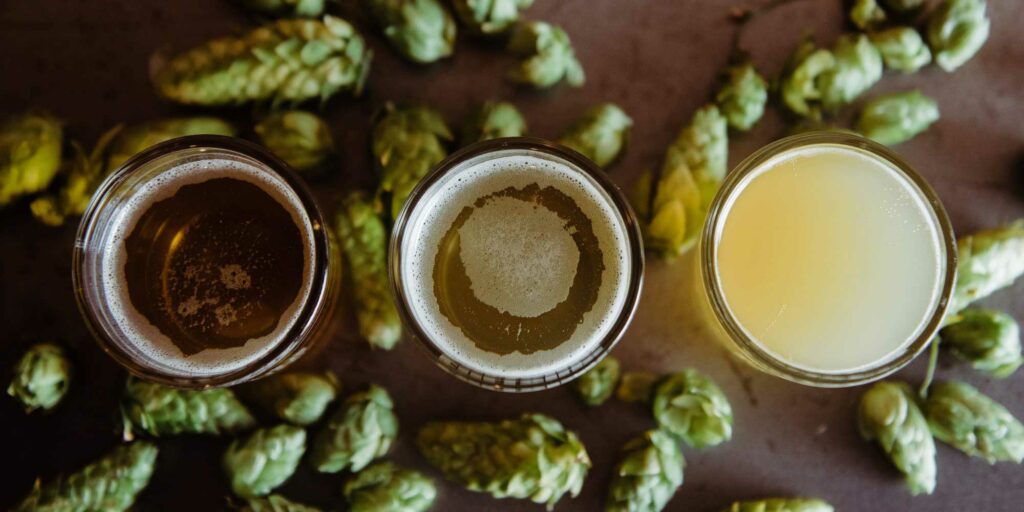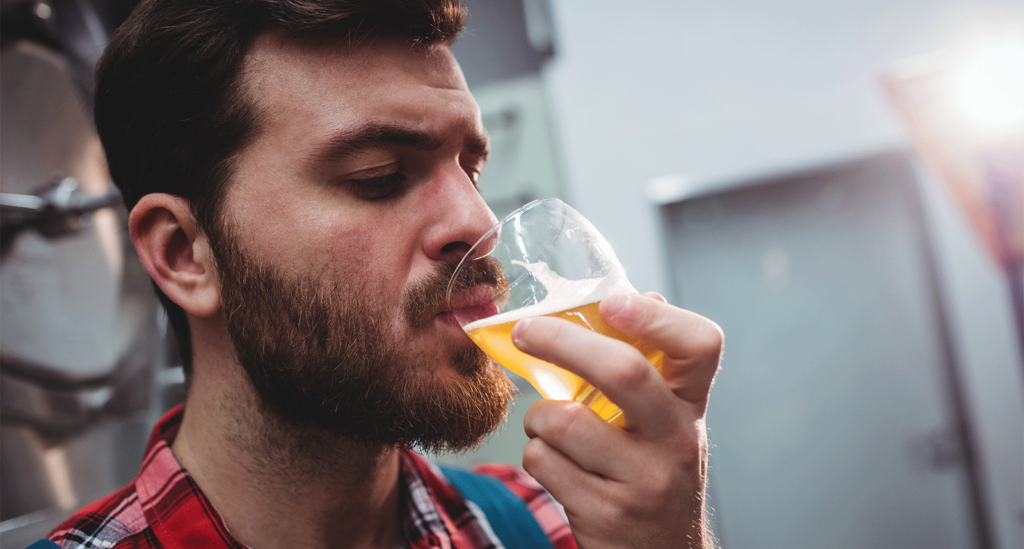What is Hop Creep, and how to avoid it?

Hop creep is a frustrating problem for homebrewers and craft beer enthusiasts alike. It can ruin batches of beer and leave drinkers disappointed. But what exactly is hop creep, and how can you stop it from ruining your brews? In this blog post, we’ll discuss why hop creep is occurring, the damage it can cause, and how to prevent it from happening in the future. So keep reading to learn why hop creep is ruining your beers – and how to stop it! It’s essential to learn how to identify off flavours in beer. Check out the blog article from our friend Matt Curtis to help build your knowledge.
Hop creep is a term used to describe beer that ferments aggressively during dry hopping. Dry hopping is a fantastic way to add hop flavours and aromas to your beer. However, it can cause off flavours when hop creep occurs. This is annoying when you’re forming a specific flavour profile or brewing an existing beer.
Yeast can produce a lot of fruity, tropical aromas. Paired with dry hopping ensures you will get a punch of aromas that can enhance your beer. This needs to be done in synergy. Otherwise, the flavours can be thrown out of balance. Hop creep will push the beer in the wrong direction due to higher amounts of yeast-related “off-flavours”. So how can this be avoided?
Keep Good Records
Understanding your brewing process will help you identify and manage the problem of hop creep. As a brewer, you can monitor for over-attenuation by measuring the alcohol and specific gravity of the finished beer and checking that they are within your target range. You can also reduce the likelihood of over-attenuation by writing recipes for a higher-fermentation wort or factoring the effect of hop creep into the brewing process.
To manage the effects of hop creep, brewers can take measures such as:
- Adding some of the hops to the whirlpool pre-fermentation
- Filtering or pasteurizing the liquid – this will “kill off” any active yeasts and stop further fermentation
- Adding alpha acetolactate decarboxylase enzymes
- Ensuring an unbroken cold-chain distribution system.
However, hop creep is complex and dependent on a range of variables. Hence, it is crucial to keep a close eye on key parameters such as pH, gravity, and VDK counts before and after dry-hopping. If hop creep is suspected, detailed QC analysis is recommended.
Know Your Target IBU
When brewing beer, it is important to understand the level of bitterness you want to reach. This can be determined by calculating the International Bitterness Units (IBU). The IBU is a measure of the bitterness contributed by the hops in a given beer. This is generally expressed as a range from 0-100. To calculate your desired IBU level, use a brewing software calculator. This can help you determine the hops you will need to achieve your desired flavour profile. Additionally, dry hopping with late hop additions can add additional bitterness. This should be considered when calculating the IBU of your beer.
Use Fresh Hops
Using fresh hops is key to avoiding hop creep. It will provide the highest quality of bitterness and aroma for your beer. Dry hopping is a great way to add additional aromatics and flavour without increasing the bitterness of your beer. Make sure you’re getting fresh hops from Geterbrewed as your trusted source. Storing them in the resealable environment-proof packaging provided within a fridge or freezer will ensure freshness is protected. You should also make sure to use the hops within a few months of purchase to ensure they stay as fresh as possible. Most of our hops would be suitable for storage for up to 3 years.

Boil for the Right Amount of time
Boiling the wort is essential for extract and all grain brewers. The boil duration should last at least 60 minutes but can be up to 120 minutes. This depends on the target’s original gravity and the evaporation rate of the system. Boiling is necessary to kill off any wild yeast or bacteria that may be present in the wort. During this process, the alpha acids in the hops are isomerized, contributing bitterness to the wort. As proteins in the wort coagulate and form a head, it can cause boilovers, known as hot break. After boiling, dry hopping can impart more hop aromas and flavours to the finished beer.
Be Consistent with Your Process
When it comes to brewing, consistency is vital. If you consistently produce the same beer with the same processes, your beers will always have the same taste and quality. To help ensure that your process is consistent, it is recommended to create a schedule for each step of the brewing process. Including the time and amount of raw materials needed. Additionally, measuring certain variables such as the volume of beer, wort temperature, fermentation temperature, and pH of wort, fermenter, and finished beer can help you monitor the progress of the brewing process and keep it consistent.
It is also important to record measurements and observations throughout the brewing process to analyze the results and identify any problems that could be contributing to hop creep. By noting the differences between different beer recipes, you can better understand the consistency of your process. For example, dry hopping can often contribute to hop creep, so if you notice this issue, you can adjust the recipe accordingly or reduce the amount of hops used in dry hopping. With consistent tracking and adjustments as needed, you can avoid hop creep and enjoy a great-tasting beer! We consistently dry hop 6 points off final gravity at Our Brewery and achieve some awe-inspiring results.
Adjust Your Recipe as Needed
Hop creep can lead to a buttery flavour, higher ABV than stated on the label, or over-pressurization due to hops carrying amylolytic enzymes that convert dextrins into fermentable sugars. The most significant factors that affect the refermentation of dry-hopped beers are hop contact time and amount of active yeast, followed by temperature. To monitor, reduce, and control hop creep, brewers can add some of the hops to the whirlpool pre-fermentation, filter or pasteurize the liquid, add alpha acetolactate decarboxylase enzymes, and ensure an unbroken cold-chain distribution system. Temperature can also be adjusted to slow down or speed up hop creep. One way to reduce hop creep is through dry hopping. Dry hopping involves adding hops late in the brewing process after primary fermentation is complete, allowing brewers to achieve the desired aroma and flavour without excessive bitterness or off-flavours.
Watch our YouTube video on Hop Creep.